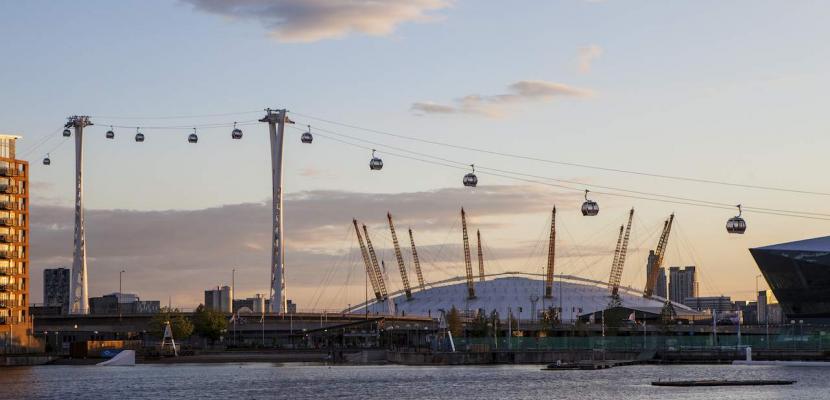
Innovation in the air: teleferic/aerial cable cars as low-carbon sustainable tourism mobility

About this good practice
Invented over a century ago for exploring mountainous regions, teleferic systems or aerial cable cars are being used as a low-carbon alternative to conventional urban transport modes, partucularly at tourism sites. This technology uses electrically-propelled steel cables to move suspended cars (or cabins) between terminals at different elevation points.
Cable cars can be an attractive transport solution to connect communities together when geographical barriers such as hills and rivers make other modes infeasible. This is of special interest to tourism sites where private car acceess is either difficult or needs to be restrained as causing congestion and parking demand than cannot be met by car park supply operating speeds of 10 to 20 km per hour, and typical operating capacity of 1,000-2,000 passengers per hour per direction.
Cable cars have the benefit of giving passengers a “ride with a view,” but they also need high standards of comfort, safety, and security. A well-designed system can also improve the quality of space around stations and stimulate regeneration. Cable car systems are beginning to show positive impacts on the quality of life of users, especially in previously underserved and inaccessible communities, more work is needed to understand their long-run costs and impacts.
A successful example is the 'London Air Line' link across the River Thames. The service opened in 2012 and is operated by 'Transport for London', promoted as "a unique view of London"
Expert opinion
Whilst ‘low-carbon mobility’ will usually conjure up images of public transport and electric vehicles, there are a number of other sustainable transport options, many of them long-proven technologies, which can also be used. In many cases, their novelty can also act as motivator for people to use them, making them especially beneficial for touristic areas, rather than for day-to-day users. Cable cars, as long as they are powered using renewable electricity, are on such low-carbon transport means, also providing a view of London. However, as the practice notes, the financial sustainability of such transport modes needs to be considered and compared to other modes, bearing in mind that faster and less novel methods will likely be prioritised by commuters.
Resources needed
Capital costs can vary widely depending on the context, with most systems ranging between 10-15 M EUR per km. Systems for moderate hilly areas have lower costs compared to mountainous and cross-river systems.
There are needs for an EIA and to respect safety and security rules.
Legal framework.
Evidence of success
The unique advantage of cable cars is their ability to climb steep hills at a fraction of the investment cost of a new tunnel or bridge. They are also often faster to implement than building new roads.
Connecting hilly areas and tourist sites by low-carbon aerial cable cars can bring considerable travel time savings and other socio-economic benefits due to direct linkages and the absence of constraints from road traffic.
Cable car systems show very positive impacts on the visitor experience.
Potential for learning or transfer
The possibility of developing a new cable car should be considered on a case-by-case basis as part of a thorough and comprehensive planning process, including an analysis of alternatives, costs and benefits. Even where cable cars are selected as a viable, lower-cost, and agile solution, there should be careful attention to its design, network integration, O&M, and long-term sustainability. Procurement and technology transfer is also key considering that only a handful of cable car manufacturers in the world have the know-how to build and operate these systems.
Cable car systems offer a low-carbon, innovative, economical, and complementary solution that could help many touriust destinations with sustainable mobility and accessibility of visitors to hilly, mountainous, or cross-river sites.
The experience of aerial cable car systems, such as the 'London Air Line', is valuable for transfer to, and learning by, tourist destinations looking for low-carbon sustainable mobility solutions.
Further information
Website
Good practice owner
You can contact the good practice owner below for more detailed information.
Transport for London


